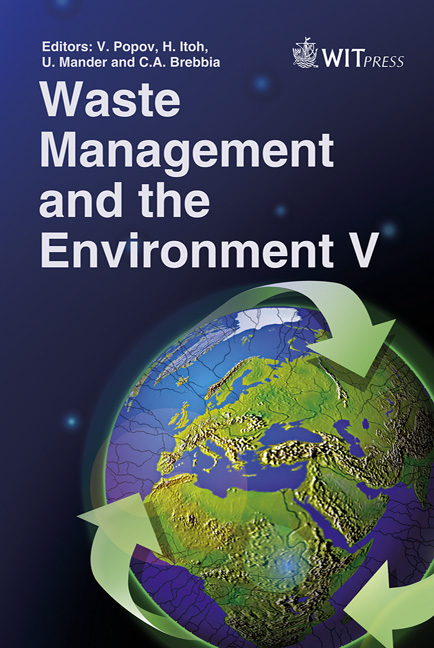Wastes Released By Tanneries At Patrocínio Paulista, São Paulo State, Brazil
Price
Free (open access)
Transaction
Volume
140
Pages
10
Page Range
359 - 368
Published
2010
Size
649 kb
Paper DOI
10.2495/WM100321
Copyright
WIT Press
Author(s)
D. M. Bonotto, J. R. Jiménez-Rueda, H. F. Palermo & L. Caprioglio
Abstract
This investigation was carried out within the Paraná sedimentary basin, Brazil, and involved the sampling of sludge and residuary waters that were collected from reservoirs/decantation ponds settled in two tanneries situated at Patrocínio Paulista, São Paulo State. Two samples from each tannery were collected, stored in appropriate flasks and transported to the LABIDRO for chemical analysis. The LABIDRO (Laboratory of Isotopes and Hydrochemistry) of the Petrology Department at the Geosciences and Exacts Sciences Institute of UNESP is situated in Rio Claro city, about 240 km distant from the investigated area. The data for residuary waters were compared with guideline values established by two different legislations: (a) Rule No. 12486 (NTA60) established in 20th October 1978 by São Paulo State for defining the potable water standards and (b) Register 997 published on 31 May 1976 that defines the permissible concentration limits in effluents to be released to water bodies (coastal, fresh or ground waters) in São Paulo State. The results confirmed that leather production is an activity with high environmental impact, despite improvements that may be achieved by tanneries. Keywords: leather, tanneries, sludge, residuary waters, São Paulo State, Brazil. 1 Introduction São Paulo is the most populous Brazilian state, comprising ~40 million inhabitants distributed over 645 municipalities. It has the highest number of industries and economic production, reaching 31% of the Brazilian GDP-gross domestic product. Despite the vigorous industrial production that includes high
Keywords
leather, tanneries, sludge, residuary waters, São Paulo State, Brazil





